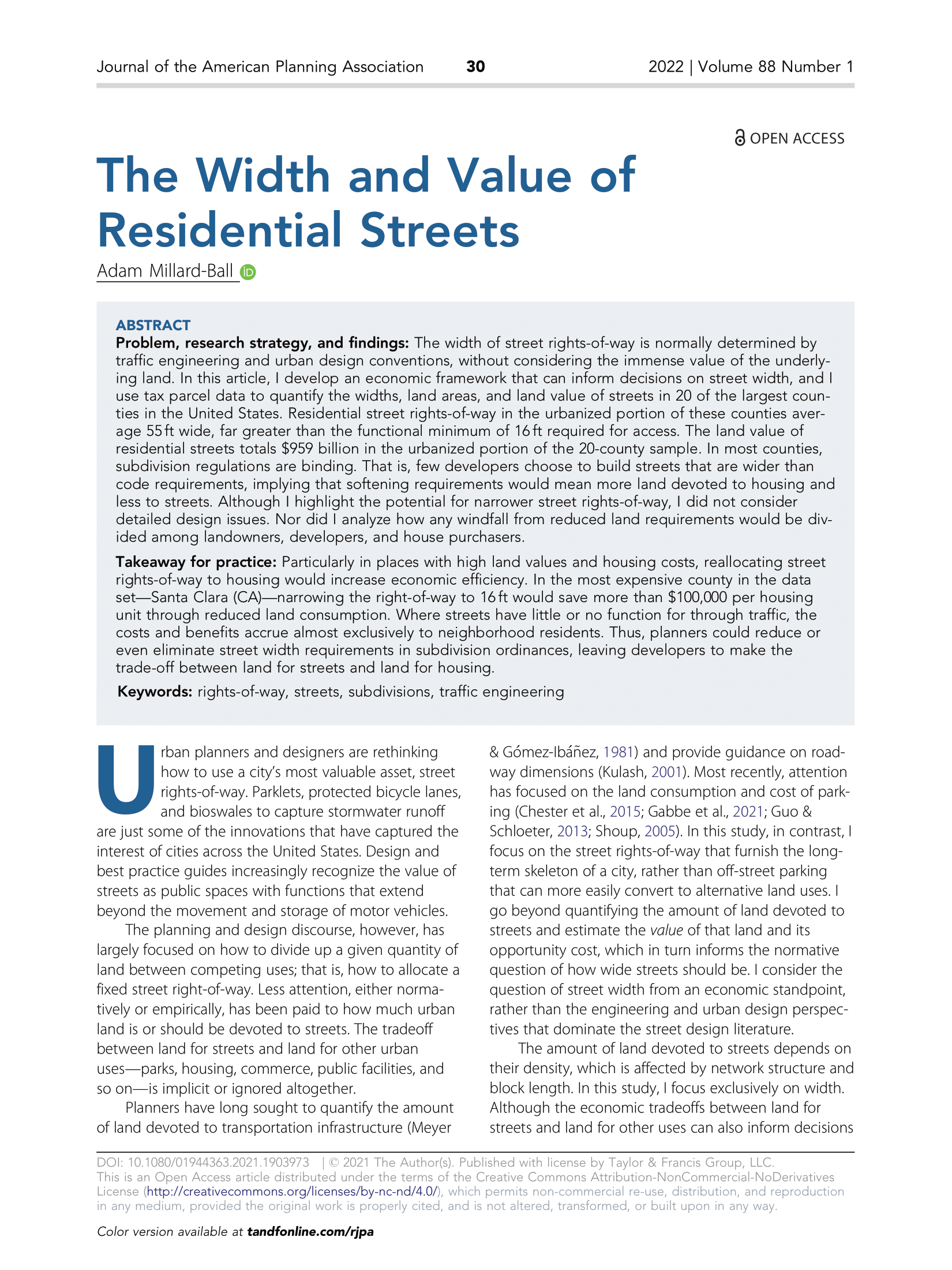Date: May 20, 2021
Author(s): Adam Millard-Ball
Abstract
The width of street rights-of-way is normally determined by traffic engineering and urban design conventions, without considering the immense value of the underlying land. In this article, I develop an economic framework that can inform decisions on street width, and I use tax parcel data to quantify the widths, land areas, and land value of streets in 20 of the largest counties in the United States. Residential street rights-of-way in the urbanized portion of these counties average 55 ft wide, far greater than the functional minimum of 16 ft required for access. The land value of residential streets totals $959 billion in the urbanized portion of the 20-county sample. In most counties, subdivision regulations are binding. That is, few developers choose to build streets that are wider than code requirements, implying that softening requirements would mean more land devoted to housing and less to streets. Although I highlight the potential for narrower street rights-of-way, I did not consider detailed design issues. Nor did I analyze how any windfall from reduced land requirements would be divided among landowners, developers, and house purchasers.
About the Project
Street rights-of-way are typically a city’s most valuable asset. Streets serve numerous functions — access, movement, and the provision of space for on-street parking, children’s play, and social interaction. But the more land that is devoted to streets, the less land there is available for housing, parks, offices, and other land uses. In this research project, UCLA researchers quantified the width of streets in 20 of the largest counties in the United States, and the value of the land under those streets. This research found that streets in the U.S. are much wider than in other countries. Street widths are normally dictated by subdivision codes and local street design manuals. The highest street land values are found in coastal California, and streets could be much narrower.


